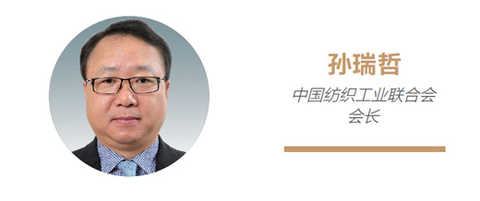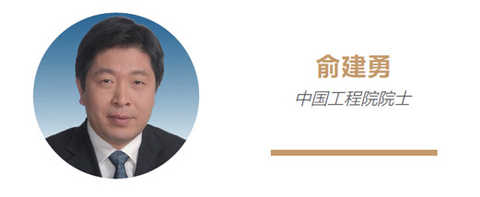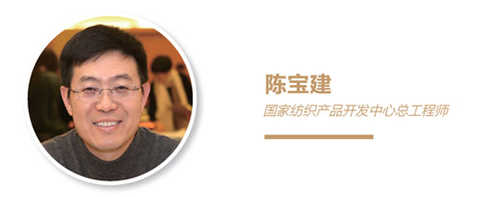“Chinese consumers are paying more and more attention to lifestyle and quality. Products and services that were considered too expensive in the past have also become within reach.†– This is the new China’s famous management company Nielsen released on August 2nd. A point of view pointed out in the Retail White Paper.
Today, with rapid changes in the market environment, consumers' needs are becoming more diversified and personalized, which is increasingly demanding for rapid response and accurate product positioning.
Products are fundamental to a manufacturing company. So what is an excellent textile product? What kind of textile products are the most demanding in the market and can lead the trend? How should such a product be developed?
With these three questions, today Xiaobian will take everyone together to follow several big coffees in the industry and deeply interpret the current development of textile products.
1. Opinion connection - product development strategy

"China's textile industry is in a period of transition from big to strong. The innovation environment under the guidance of policy guidance, capital assistance, network and talent platform is constantly improving. Innovation and development have become the consensus of the industry. The systematic competitive advantage of China's textile industry It is forming, and the synergy potential of the industry is huge. Cooperation has become an important source of competitive advantage. Competition and cooperation is the current pattern of the world textile industry. China's textile industry needs to focus on product development and technological innovation, with technology transmission, intelligent efficiency, and cultural Internalization of energy and responsibility is the focus of efforts to promote collaborative innovation and value re-engineering in the industry."

“Currently, the integration of textile technology innovation and emerging technology forms a multi-dimensional development space, showing a trend of green, intelligent, expanding and integrating. For example, from the perspective of green raw materials, including bio-based fibers, recycled fibers, and raw liquid-colored fibers. In the future, regenerated cellulose fiber, alginic acid fiber stock solution dyeing technology, high-quality fine fiber fiber stock solution deep dyeing technology are the development direction."
2. In-depth interviews - product development strategy
In order to have a clearer understanding of the specific work of textile product development, we have connected the general project of the National Textile Product Development Center and an expert with extensive experience in the development of textile products - Mr. Chen Baojian, to talk with him about textiles. Product development

Chen Baojian, Chief Engineer of the National Textile Product Development Center, Director of the Science and Technology Information Department, Vice Chairman of the Textile Guide, and a professor-level senior engineer. He has long been engaged in the application research of textile product development, textile technology, textile product development technology innovation alliance cooperation system and textile product development innovation management system. Actively carry out scientific and technological information and product development consulting services, industrial development planning, product development planning and innovative training of textile fabric design talents.
Q: China Textile Information Center, Ministry of Industry Development
A: Chen Baojian
Q: Compared with the development of the design and brand building in the past ten years, what progress has been made in the work of high value-added fields at both ends of the “smile curve� What is the current situation?
A: In terms of R&D and design, the outstanding progress of textile companies is reflected in the two aspects of system development and professional configuration. Through the guidance of the overall development strategy of the enterprise, a complete R&D system has been established, and resources are invested to achieve professional allocation. For example, Zhejiang Red Green Blue Textile Printing and Dyeing Co., Ltd. has established a professional design team. The company has broadened its horizons and hired 35 foreign designers to use their international vision to design original products. With the international design of the design, high-grade materials and process characteristics, the products of red, green and blue have won high reputation for the company while satisfying the needs of customers at home and abroad.
In terms of brand building, more and more companies are beginning to value the value of intellectual property. Jiangsu Lianfa Textile Co., Ltd. has established an enterprise intellectual property management system within the enterprise to manage the intellectual property rights of the enterprise. In addition, some companies continue to focus on creating their own unique brands and trademarks. For example, Dezhou Huayuan Ecological Technology Co., Ltd., as the national new fiber yarn product development base, focuses on creating Jincome, Jinrongfang and Jujiu brand products; Shanghai Defulun Chemical Fiber Co., Ltd. as a national differentiated polyester new material The product development base has developed four products: “De Series Fiberâ€, “Fu Series Fiberâ€, “Lun Series Fiber†and “Feng Cai Series Fiberâ€. Suzhou Jinhui Fiber New Material Co., Ltd. has developed safety, health, comfort and environmental protection brand products for different market needs.
Q: In the face of high production costs in the textile industry, where does the company's motivation for developing new products originate? What are the challenges?
A: The driving force for companies to develop new products is mainly from the changes in consumers' living environment and lifestyle. Technological advancement and diversification of demand have led to a shortened product life cycle and increased competition; changes in market demand have forced companies to develop products. The main challenges are: first, grasp the market demand; second, the precise positioning of products; third, the trend of the trend; fourth, the quality of technical support; fifth, improve service marketing. Sixth, fast response capability.
Q: How does China's popular fabric technology innovation alliance serve the textile industry?
A: I mainly introduce the industrial technology alliance from the following aspects.
First, positioning: The alliance is driven by textile technology innovation, with the application of new materials and new technologies as a means to optimize the industries with innovation and innovation in fiber, spinning, weaving, dyeing and finishing. Leading enterprises in the upstream and downstream of the chain establish a technology promotion platform, aiming at the innovative characteristics of new materials and new technologies, combining the analysis of industrial economic development and fashion trends to analyze and research the application fields of the consumer market, jointly formulating product development and marketing plans, and organizing implementation. Determine the mission objectives and achieve integrated innovation that transforms from technical value to commodity value.
Second, the way: through screening of fiber, technical project objectives, development direction research, adaptation of enterprise optimization, product development, Miles, and finally explosive three-dimensional network promotion (seminars, summary exchanges, "Textile Herald", manual, contest , exhibition, mainstream media WeChat and website).
Third, the meaning: China's popular fabric technology innovation alliance focuses on the collaborative innovation of the upstream and downstream of the industry chain, has a strong industrial role, is conducive to the accumulation of innovative resources, promote technological breakthroughs in new materials and new technologies, and solve its development. Key and common technical issues form the technological innovation chain of the core of the industry, and promote the transformation of the technological value of new materials and new technologies to the value of commodities.
The development of China's popular fabric technology innovation alliance series has increased the ability of product development services for enterprises. Through face-to-face communication of new materials and new technologies and on-the-spot use guidance, enterprises are familiar with the characteristics and advantages of new materials and technologies. Greatly improved the success rate of product development.
Q: How do you view the development process of a “new product†in the textile industry, can you interpret the development of a new product from the perspective of product life cycle?
A: Generally speaking, the product development process is divided into six phases: requirements analysis, design phase, development phase, verification phase, release phase and life cycle phase.
(1) Demand analysis
Enterprises should understand the product needs of target customers in the market segment, and based on the direction of technology development, use technology platform resources to conceive and screen new products, form product ideas, and conform to their product development plans and market. Opportunity to evaluate. The enterprise shall form a product demand specification at the concept stage, and conduct relevant reviews, form a team, and formulate a new product development project task book.
(2) Design stage
Through quality function analysis (QFD), companies can translate product requirements into design elements, clearly define product and competitive advantages, and develop new product development project plans and resource plans, including: target market; main functions and performance requirements; production process And process technical requirements for each process; environmental performance evaluation; acceptance rules, technical specifications and enterprise standards; development input costs and benefit estimates; resource allocation requirements (such as personnel, information, equipment, capital guarantees and other related content) and risk management, etc. . At the design stage, the company must determine the new product development project task book and product specifications.
(3) Development stage
Enterprises should strictly implement the task book of new product development projects, integrate and implement tasks such as technology research and development, product design, sample trial production, marketing strategy and planning, and carry out product development planning, procurement, cost, quality, production, human resources, risk, etc. Manage and coordinate the work progress of relevant departments to ensure that the product development plan is completed on schedule. During the development phase, the company will conduct technical testing of new products, evaluate the first sample, develop a detailed product release plan, select trial customers, and establish technical and product documentation.
(4) Verification phase
The enterprise shall conduct a technical and economic evaluation of the new product according to the new product development project task book and product specification, and solicit the opinions of the target customers, and change the design that fails to meet the product requirements until the product specification is met. In the verification phase, the company will complete the final product development technical specifications and related documents, including: revised product specifications, manufacturing specifications for semi-finished products, manufacturing processes and capacity planning, and final product release plans.
(5) Release stage
Enterprises should formulate new product release plans based on target market, combining product characteristics, competitive advantage, actual price, marketing channels and product lifecycle management, accurately target customers, clarify product promotion priorities and time plans, and configure moderate products. Production resources to meet customer needs in terms of performance, functionality, price and delivery. The enterprise shall form a life cycle management plan during the release phase and complete the evaluation of the contract.
(6) Life cycle stage
Enterprises need to conduct full lifecycle management of products, adopt different marketing strategies for different characteristics of product introduction period, growth period, maturity period and recession period. Enterprises should formulate product life cycle termination plan according to market conditions and find product transition strategy. And alternative product plans.
Q: What do you think are the key aspects of intelligent manufacturing of textile products in the sub-sector industry? What are the manifestations in the printing and dyeing industry, cotton spinning industry, industrial textile industry and clothing industry?
A: Intelligent manufacturing can be divided into three major areas: intelligent equipment, intelligent operation, and intelligent products; the following is a brief introduction from three aspects.
(1) Intelligent manufacturing in the cotton spinning industry currently includes expert diagnostic systems, such as the Rieter Cobweb System and the Jingweiyi System. Jiangsu Dasheng Group Co., Ltd. uses energy production monitoring system to realize online energy monitoring, energy statistics and analysis, benchmarking management system, energy benchmarking management, electric system peak and valley analysis, equipment management, energy efficiency analysis, comprehensive reporting system, online accounting The carbon emission of the product and many other functions have improved the level of energy management.
(2) The automatic distribution system of dyeing and chemical materials in the printing and dyeing industry improves the reproducibility of dyeing and controls the quality of products more accurately. For example, Huafang Co., Ltd. has established and improved the basic platform for automatic distribution of dyeing and chemical additives, improved the automation of the distribution process of dyeing chemicals, and secondly realized the online monitoring and control of dyeing chemicals to ensure additives. And the dyeing liquid meets the expected standards in terms of concentration and viscosity, and improves the precision and intelligence of the distribution of dyeing chemicals.
(3) Personalized customization in the apparel industry is an important manifestation of enterprises adapting to new demands of market consumption and improving their flexible manufacturing capabilities. Red Collar Group aims to meet the individualized needs of consumers, carry out industrialized production line of personalized products, innovate the e-commerce retail C2M+O2O model, and establish a cool Internet platform integrating order submission, design proofing and logistics payment. It realizes the direct interaction between consumers and manufacturers, eliminates information asymmetry caused by intermediate links and various agency costs, and is exploring the path for intelligent manufacturing in the apparel industry.
Q: Based on the requirements of rapid iteration, what is the current cycle of textile product development (in the case of fabrics)? Compared with the past, is there a significant improvement in the level of rapid response construction of fabric companies, or is there no significant change at present, still staying at the level of vision?
A: At present, the big cycle is still spring, summer, autumn and winter, and the daily brand cycle. Many textile and apparel companies also build a rapid response management system internally. For example, Shanghai Dingtian Fashion Technology Co., Ltd. integrates the design, research and development, production and sales processes of the entire product with the powerful ERP system, and establishes the first personalized small-volume rapid response ERP platform in China, realizing the production. Standardization, intelligence and automation. The company's response time from accepting orders to product sampling is only 5-7 days, while the industry response time is more than one month is very common. Jiangsu Lianfa Textile Co., Ltd. meets customer demand-oriented agile marketing management, builds fabric library, code supermarket, and increases the spot sales of fabrics, shortens the supply cycle and meets the needs of fast delivery in the market. In order to meet the customer's requirements for delivery, the company adopted various measures to shorten the production cycle. The hand-weaving sample was delivered for 3 days, the large sample was 10 days, and the large cargo was 20 days, which was adapted to the needs of customers to seize the market.
Editor in charge: Xu Yuehua
Acetate Sunglasses,Thick Acetate Sunglasses,Women Acetate Sunglasses,Cat Eye Shape Fashion Sunglasses
Wenzhou Joysee Eyewear Company Ltd. , https://www.joysee-glasses.com